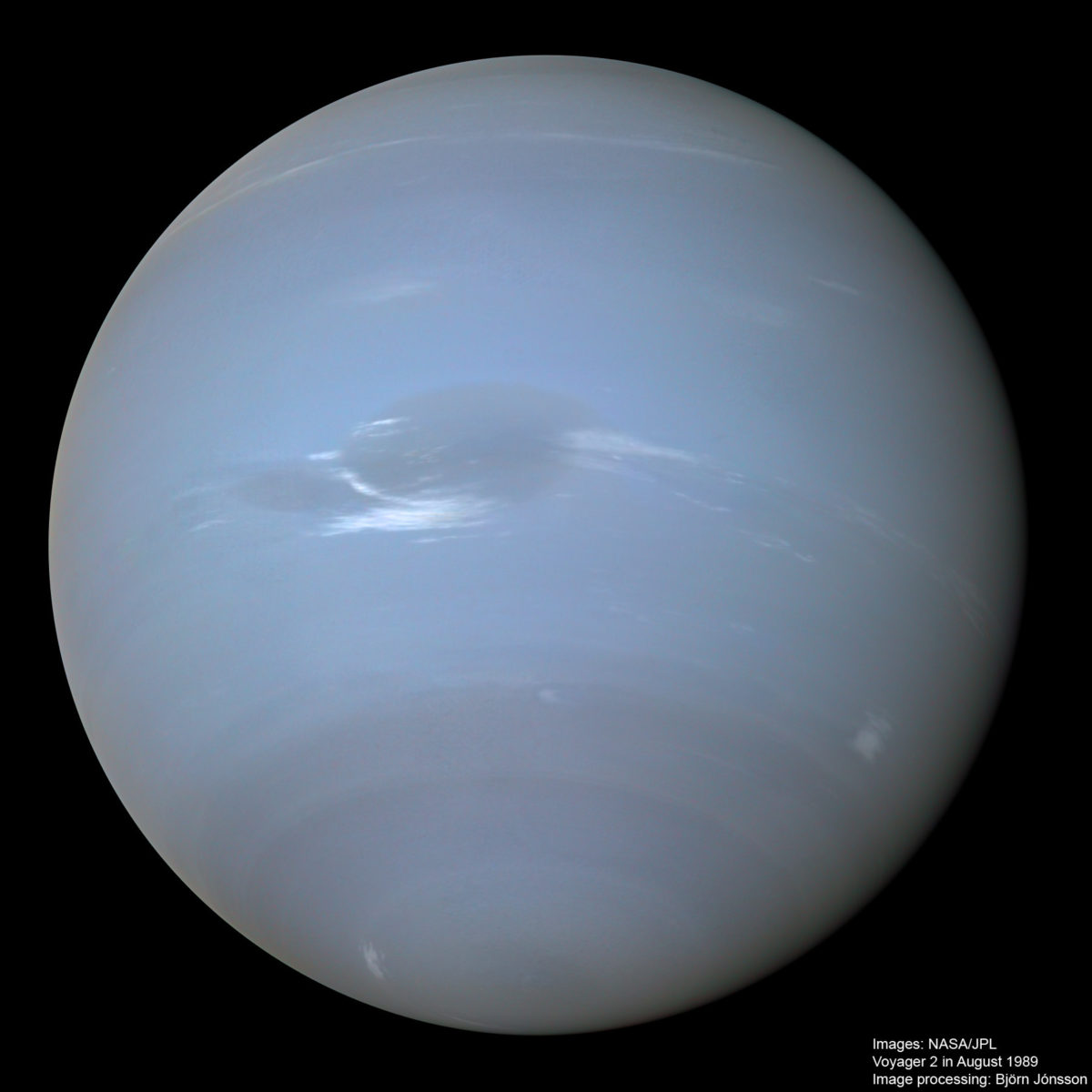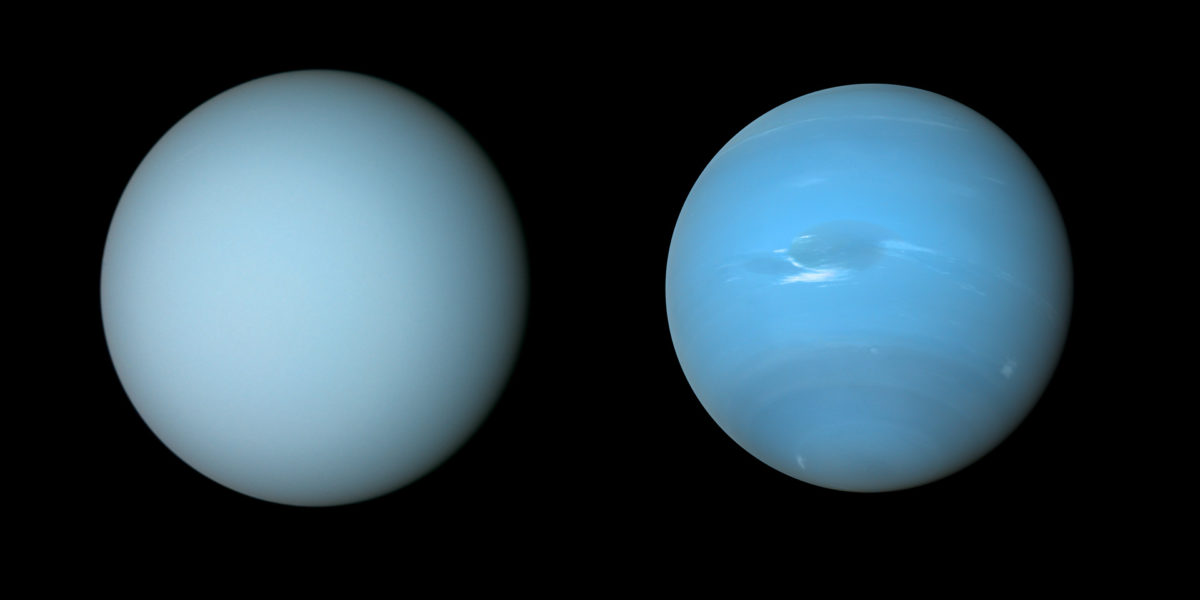Andrew Jones • Jun 28, 2022
China looks to outer Solar System with nuclear Neptune orbiter
Chinese planetary scientists and engineers are setting their sights on the outer Solar System and developing new ways to get there, a proposal for a Neptune orbiter reveals.
The pre-research paper published in Scientia Sinica Technologica by a team of senior space figures outlines the spacecraft's design, science objectives, and, crucially, the plans for its nuclear fission reactor for power generation. The power source would offer game-changing amounts of power for science payloads, data downlink capability, and highly capable electric propulsion systems.
This would represent a major technological leap in the country’s space exploration capabilities, producing far more energy than that produced by battery-like radioisotope thermoelectric generators (RTGs), and thus open up new possibilities.
This new spacecraft power source would make it easier to access the outer Solar System, where few of humanity's space exploration missions have ventured. So far only one mission, Voyager 2, which launched in 1977 and made a flyby of the icy giant in 1989, has targeted Neptune. Its flying visit with a limited suite of instruments was momentous, but leaves much to be discovered about the eighth planet of our Solar System.
China meanwhile launched its first interplanetary mission, Tianwen-1, in July 2020, placing a spacecraft in orbit around Mars and a solar-powered rover on its surface.
There are reasons why ventures into the outer system are few and far between, and why the ice giants of Uranus and Neptune have yet to have anything other than passing visits. Challenges come in the form of power supply, with Neptune, at an average distance of 4,495 million kilometers (2,793 million miles) from the Sun, receiving just 1/900th of the solar illumination as Earth, as well as communicating over vast expanses, and the time taken to reach the far-flung corners of the system. Fuel for a large deceleration to enter orbit around a planet is also required, as is a spacecraft capable of operating in extreme environments for at least 15 years.

Neptune orbiter outline
The proposed mission overview identifies a launch window in 2030 that would see the probe launch on a Long March 5 rocket. It would reach Neptune at a distance of around 30 AU in 2040, via a Jupiter flyby, and enter a polar orbit around the ice giant.
The mission, the authors say, would aim to provide new insights into the outer Solar System, the origin and evolution of the Solar System, and potentially the origin of life.
To help meet the engineering and technology challenges above and answer some of the scientific riddles of Neptune, the Chinese team proposes the use of a 10 kWe (kilowatt-electric) nuclear fission reactor.
The reactor would generate the electricity needed to power the spacecraft’s payloads in deep space and a propulsion system of four electric thrusters. The spacecraft would have a mass of up to 3,000 kilograms (about 6,614 pounds) and a dumbbell-shaped structure to keep the reactor as far from the science payloads as possible to reduce the need for shielding from heat and radiation. The proposal also details international standards for the use of nuclear power in space.
Science objectives include global remote sensing and studying Neptune’s internal structure, atmospheric composition and motion characteristics, the magnetic field, the solar wind, and the planet’s moons and ring system.
The main spacecraft would also carry four microsatellites totaling 100 kilograms (about 220 pounds). Two would be used as penetrators, separately targeting the Neptunian atmosphere and Triton. Two others could be released en route to Neptune to visit primitive celestial bodies such as asteroids and centaurs, the latter being small, orbit-crossing bodies between Jupiter and Neptune.
Professor Leigh Fletcher, of the School of Physics and Astronomy at the University of Leicester in the UK, notes that with the US Decadal Survey recommending a Uranus mission as the top priority for the coming decade, a thorough exploration of the Neptunian system is a worthy goal for the future.
“I think our understanding of the formation and environments of our Solar System will remain incomplete until we have a proper comparison of both Uranus and Neptune,” said Fletcher. “You’d need a sophisticated orbiter, with a payload able to explore both the planet itself and the diverse satellites and rings. For that, you’d need a comprehensive orbital tour, which requires fuel and a long lifetime.”
Fletcher adds that Neptune's moon Triton, with its amazing geophysical activity and plumes, is also a particularly enticing goal. The largest of Neptune’s thirteen known moons, Triton remarkably has a retrograde orbit, an ice cap of frozen nitrogen and methane, and is possibly an ocean world.

Chinese interest in nuclear power for space
China’s prowess in using nuclear sources for space is far behind that of the United States, which has sent RTG-powered rovers to several destinations including Mars as well as the Voyagers and New Horizons far into deep space. China has relied on Russia for radioisotope units for its Chang’e-3 and 4 lunar lander and rover missions, including an RTG for Yutu-2, but there is recognition that capabilities in this area are needed for future plans.
Wu Weiren, a leading Chinese space exploration figure and newly-appointed director of the recently-established Tiandu deep space exploration laboratory, has called for breakthroughs in nuclear power for space, in stages at levels of 10, 100, and 1,000 kWe, based on development trends and future mission requirements. It is hard to gauge China’s progress in this area, in part due to the sensitive nature of nuclear technology. It is clear, though, that researchers in China are, as with so many areas of space activity, assessing international progress and possibilities in this area.
More practically, there are already proposals for reactors in Chinese space missions, including the uranium-powered ACMIR. Further signs that nuclear power is part of China’s future plans for space exploration can also be seen in the fact that the country is considering adding a third spacecraft to its planned mission to study the nose and tail of the heliosphere. The additional probe would, if selected, head away from the Sun perpendicular to the plane of the ecliptic and be powered by a nuclear reactor.
Tom Colvin, commenting on the uses of nuclear fission for space while a researcher at the IDA Science and Technology Policy Institute, noted that nuclear fission reactors are uniquely suitable for enabling power and propulsion for robotic missions to the outer planets, but also power for crewed missions to the surface of Mars. Developing a fission reactor for these missions would involve “myriad technical challenges," but he notes there are no showstoppers. “It simply takes time and money.”
Russia has used over 30 fission reactors in space, according to the World Nuclear Association, while the U.S. has flown just one: SNAP-10A (System for Nuclear Auxiliary Power) in 1965. However, NASA is currently working on fission systems to power lunar surface missions under the Artemis umbrella.

Will the Neptune orbiter fly?
There is currently no indication of the status of this pre-research publication, which was funded by the China National Space Administration (CNSA). However, the proposal is a strong indication and reflection of where China’s space industry officials are looking in terms of capabilities and destinations for exploration.
Notably, the paper is authored by an interesting constellation of senior figures from the major institutions engaged in space technology, exploration, and nuclear power. These include the CNSA, the two major satellite makers under China’s main space contractor (CAST and SAST), the School of Nuclear Science and Technology at Lanzhou University, the China Atomic Energy Authority, the China Institute of Atomic Energy, institutes under the Chinese Academy of Sciences and Beihang and Peking universities.
On the engineering side, it would require breakthroughs in key technologies including space reactor power supply and ultra-long-distance deep-space tracking and control. While presenting challenges they would also contribute to the stated national goal of China becoming a major space power.
With these advances, Neptune could become part of the country’s exploration roadmap, which already includes a Mars sample return, near-Earth asteroid sample return, and main-belt comet study, as well as a Jupiter mission with a potential ice giant flyby. The Neptune mission's chances likely depend on engineering progress and access to funding over the next few years.
Let’s Go Beyond The Horizon
Every success in space exploration is the result of the community of space enthusiasts, like you, who believe it is important. You can help usher in the next great era of space exploration with your gift today.
Donate Today

 Explore Worlds
Explore Worlds Find Life
Find Life Defend Earth
Defend Earth

